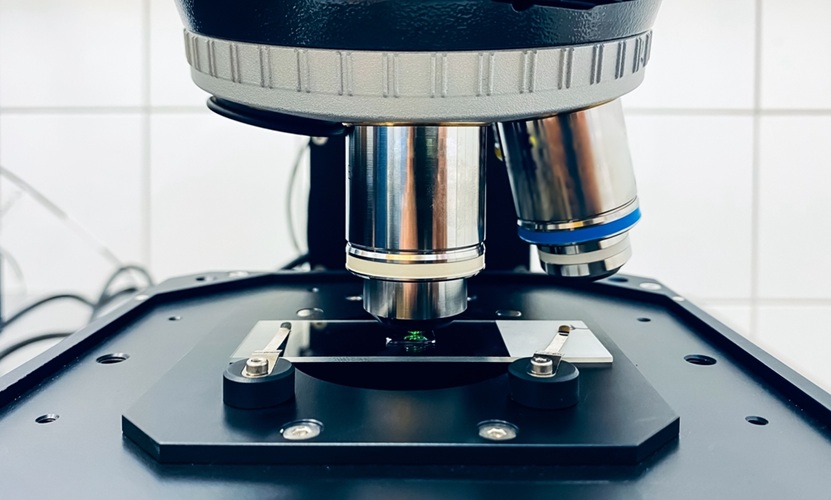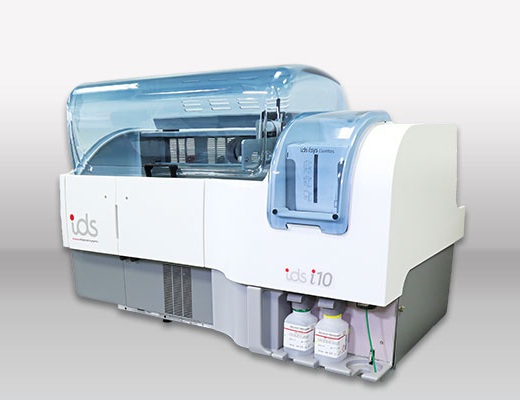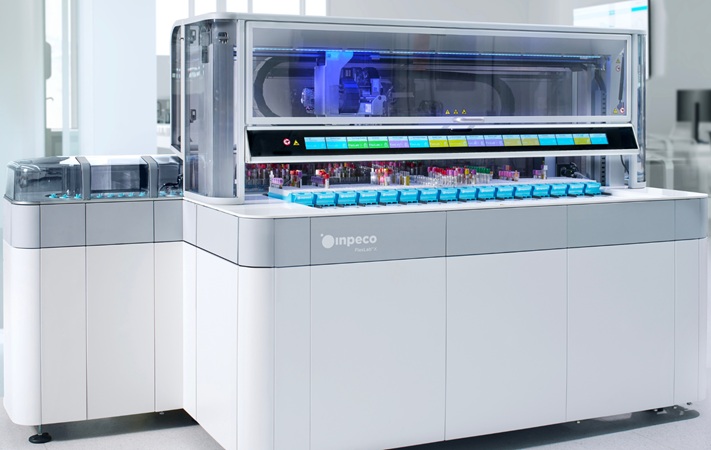Immunoassay Monitors Parasite Persistence in Chagas Disease
|
By LabMedica International staff writers Posted on 01 Mar 2018 |
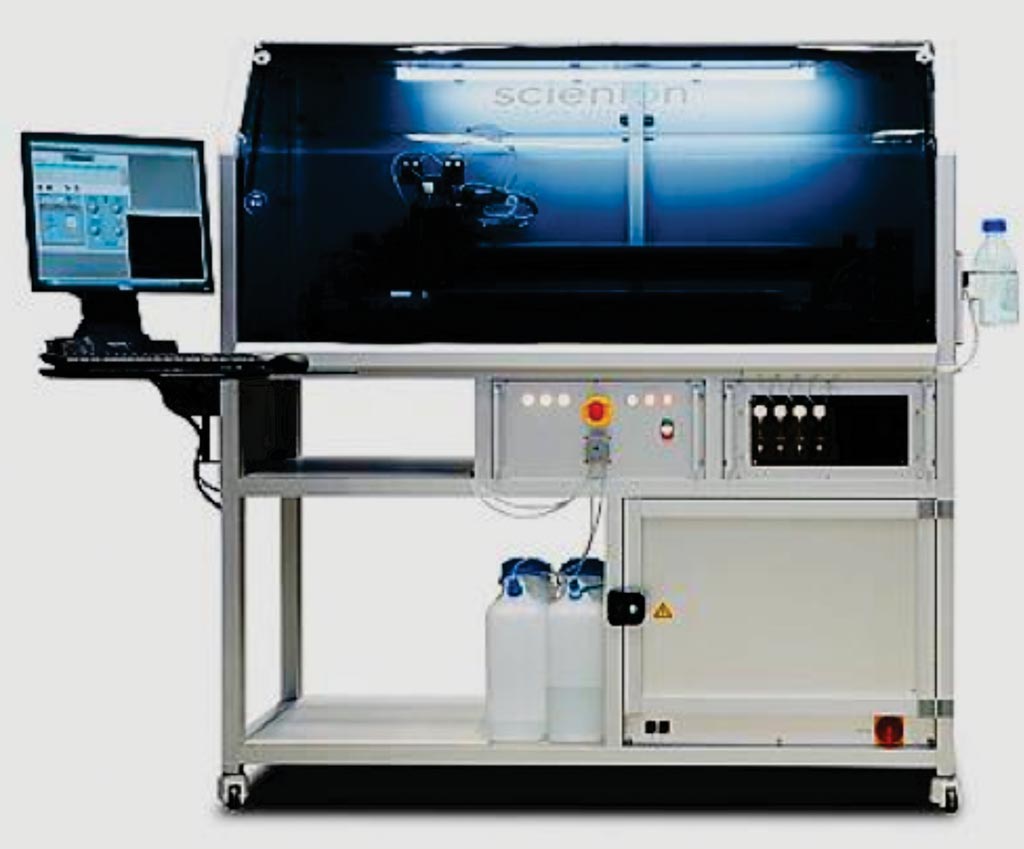
Image: The sciFLEXARRAYER system is an ultra-low volume dispensing systems (Photo courtesy of SCIENION).
The Trypanosoma cruzi parasite is the causative agent of Chagas disease, and infects about six million individuals in more than 20 countries. Monitoring parasite persistence in infected individuals is of utmost importance to develop and evaluate treatments to control the disease.
In the absence of specific clinical signs, several techniques have been proposed to evaluate the treatment efficacy of Chagas disease including serological assays and the detection of the parasite in blood by polymerase chain reaction (PCR). Among these techniques, PCR has shown promising results for assessment of anti-parasitic therapy failure, but not therapy efficacy.
An international team of scientists led by those at INFYNITY BIOMARKERS SAS (Lyon, France) designed a multiplex serology assay, an array of fifteen optimized T. cruzi antigens, to evaluate antibody diversity in 1,654 serum samples from chronic Chagas patients. This included 1,199 patients without self-reported previous treatment or 455 with a history of benznidazole (BZN) treatment. Among these treated patients, the reported treatment history ranged from one year to ten years prior to accrual.
The assay used in the study was an extended version of the MultiCruzi confirmatory assay. The team used the sciFLEXARRAYER system (SCIENION, Berlin, Germany) to print fifteen T. cruzi antigens, selected for their proven immunogenic properties, in duplicates in each well of a 96-well plate. The coating of antigens and the enzyme-linked immunosorbent assay (ELISA) were carried out. The target-capture real-time (RT) PCR assay used in this study was developed based on the PCR method that targets satellite T. cruzi DNA. DNA extraction and concentration was improved through use of a target capture step that employed magnetic beads coated with T. cruzi-specific 20-mer capture oligonucleotides.
The scientists found one specific antibody response (antibody 3, Ab3) showed a strong correlation with T. cruzi parasite persistence as determined by T. cruzi PCR positive results. High and sustained Ab3 signal was strongly associated with PCR positivity in untreated patients, whereas significant and progressive decline in Ab3 signals was observed in BZN-treated patients who cleared parasitemia based on blood PCR results. Ab3 was reactive in 98% of T. cruzi seropositive (PCR negative and PCR positive) samples.
The authors concluded that Ab3 is a new surrogate biomarker that strongly correlates with parasite persistence in chronic and benznidazole-treated Chagas patients. They hypothesized that Ab3 is induced and maintained by incessant stimulation of the immune system by tissue-based and shed parasites that are not consistently detectable by blood based PCR techniques. Hence, a simple immunoassay measurement of Ab3 could be beneficial for monitoring the infectious status of seropositive patients. The study was published on February 9, 2018, in the journal Public Library of Science Neglected Tropical Diseases.
Related Links:
INFYNITY BIOMARKERS
SCIENION
In the absence of specific clinical signs, several techniques have been proposed to evaluate the treatment efficacy of Chagas disease including serological assays and the detection of the parasite in blood by polymerase chain reaction (PCR). Among these techniques, PCR has shown promising results for assessment of anti-parasitic therapy failure, but not therapy efficacy.
An international team of scientists led by those at INFYNITY BIOMARKERS SAS (Lyon, France) designed a multiplex serology assay, an array of fifteen optimized T. cruzi antigens, to evaluate antibody diversity in 1,654 serum samples from chronic Chagas patients. This included 1,199 patients without self-reported previous treatment or 455 with a history of benznidazole (BZN) treatment. Among these treated patients, the reported treatment history ranged from one year to ten years prior to accrual.
The assay used in the study was an extended version of the MultiCruzi confirmatory assay. The team used the sciFLEXARRAYER system (SCIENION, Berlin, Germany) to print fifteen T. cruzi antigens, selected for their proven immunogenic properties, in duplicates in each well of a 96-well plate. The coating of antigens and the enzyme-linked immunosorbent assay (ELISA) were carried out. The target-capture real-time (RT) PCR assay used in this study was developed based on the PCR method that targets satellite T. cruzi DNA. DNA extraction and concentration was improved through use of a target capture step that employed magnetic beads coated with T. cruzi-specific 20-mer capture oligonucleotides.
The scientists found one specific antibody response (antibody 3, Ab3) showed a strong correlation with T. cruzi parasite persistence as determined by T. cruzi PCR positive results. High and sustained Ab3 signal was strongly associated with PCR positivity in untreated patients, whereas significant and progressive decline in Ab3 signals was observed in BZN-treated patients who cleared parasitemia based on blood PCR results. Ab3 was reactive in 98% of T. cruzi seropositive (PCR negative and PCR positive) samples.
The authors concluded that Ab3 is a new surrogate biomarker that strongly correlates with parasite persistence in chronic and benznidazole-treated Chagas patients. They hypothesized that Ab3 is induced and maintained by incessant stimulation of the immune system by tissue-based and shed parasites that are not consistently detectable by blood based PCR techniques. Hence, a simple immunoassay measurement of Ab3 could be beneficial for monitoring the infectious status of seropositive patients. The study was published on February 9, 2018, in the journal Public Library of Science Neglected Tropical Diseases.
Related Links:
INFYNITY BIOMARKERS
SCIENION
Latest Microbiology News
- Breakthrough Diagnostic Technology Identifies Bacterial Infections with Almost 100% Accuracy within Three Hours
- Innovative ID/AST System to Help Diagnose Infectious Diseases and Combat AMR
- Gastrointestinal Panel Delivers Rapid Detection of Five Common Bacterial Pathogens for Outpatient Use
- Rapid PCR Testing in ICU Improves Antibiotic Stewardship
- Unique Genetic Signature Predicts Drug Resistance in Bacteria
- Unique Barcoding System Tracks Pneumonia-Causing Bacteria as They Infect Blood Stream
- Rapid Sepsis Diagnostic Test Demonstrates Improved Patient Care and Cost Savings in Hospital Application
- Rapid Diagnostic System to Detect Neonatal Sepsis Within Hours
- Novel Test to Diagnose Bacterial Pneumonia Directly from Whole Blood
- Interferon-γ Release Assay Effective in Patients with COPD Complicated with Pulmonary Tuberculosis
- New Point of Care Tests to Help Reduce Overuse of Antibiotics
- 30-Minute Sepsis Test Differentiates Bacterial Infections, Viral Infections, and Noninfectious Disease
- CRISPR-TB Blood Test to Enable Early Disease Diagnosis and Public Screening
- Syndromic Panel Provides Fast Answers for Outpatient Diagnosis of Gastrointestinal Conditions
- Culture-Free Platform Rapidly Identifies Blood Stream Infections
- POC PCR Test Rapidly Detects Bacterial Meningitis Directly at Point of Sample Collection
Channels
Clinical Chemistry
view channel
Carbon Nanotubes Help Build Highly Accurate Sensors for Continuous Health Monitoring
Current sensors can measure various health indicators, such as blood glucose levels, in the body. However, there is a need to develop more accurate and sensitive sensor materials that can detect lower... Read more
Paper-Based Device Boosts HIV Test Accuracy from Dried Blood Samples
In regions where access to clinics for routine blood tests presents financial and logistical obstacles, HIV patients are increasingly able to collect and send a drop of blood using paper-based devices... Read moreMolecular Diagnostics
view channel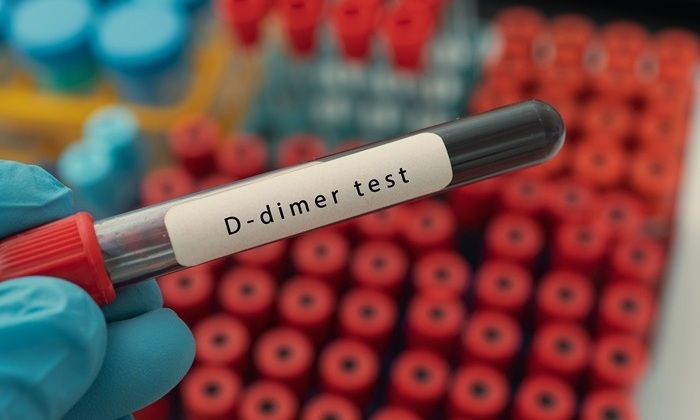
D-Dimer Testing Can Identify Patients at Higher Risk of Pulmonary Embolism
Pulmonary embolism (PE) is a commonly suspected condition in emergency departments (EDs) and can be life-threatening if not diagnosed correctly. Achieving an accurate diagnosis is vital for providing effective... Read more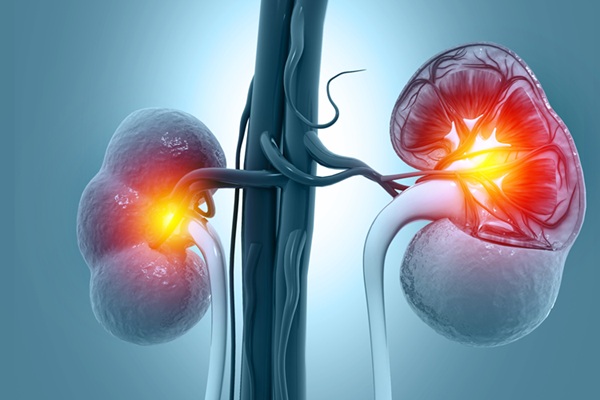
New Biomarkers to Improve Early Detection and Monitoring of Kidney Injury
Drug-induced kidney injury, also known as nephrotoxicity, is a prevalent issue in clinical practice, occurring when specific medications at certain doses cause damage to the kidneys. Nephrotoxicity can... Read moreHematology
view channel
New Scoring System Predicts Risk of Developing Cancer from Common Blood Disorder
Clonal cytopenia of undetermined significance (CCUS) is a blood disorder commonly found in older adults, characterized by mutations in blood cells and a low blood count, but without any obvious cause or... Read more
Non-Invasive Prenatal Test for Fetal RhD Status Demonstrates 100% Accuracy
In the United States, approximately 15% of pregnant individuals are RhD-negative. However, in about 40% of these cases, the fetus is also RhD-negative, making the administration of RhoGAM unnecessary.... Read moreImmunology
view channel
Post-Treatment Blood Test Could Inform Future Cancer Therapy Decisions
In the ongoing advancement of personalized medicine, a new study has provided evidence supporting the use of a tool that detects cancer-derived molecules in the blood of lung cancer patients years after... Read more
Cerebrospinal Fluid Test Predicts Dangerous Side Effect of Cancer Treatment
In recent years, cancer immunotherapy has emerged as a promising approach where the patient's immune system is harnessed to fight cancer. One form of immunotherapy, called CAR-T-cell therapy, involves... Read more
New Test Measures Preterm Infant Immunity Using Only Two Drops of Blood
Preterm infants are particularly vulnerable due to their organs still undergoing development, which can lead to difficulties in breathing, eating, and regulating body temperature. This is especially true... Read more
Simple Blood Test Could Help Choose Better Treatments for Patients with Recurrent Endometrial Cancer
Endometrial cancer, which develops in the lining of the uterus, is the most prevalent gynecologic cancer in the United States, affecting over 66,000 women annually. Projections indicate that in 2025, around... Read morePathology
view channel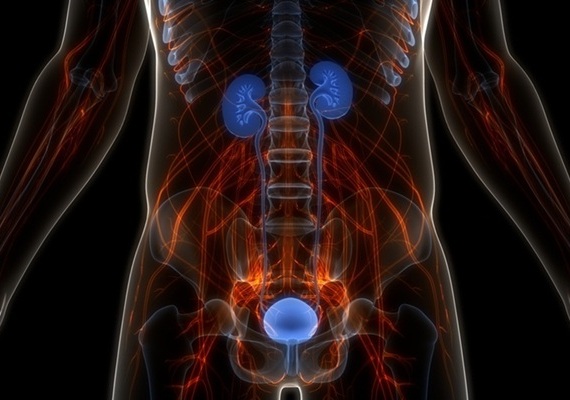
AI Model Predicts Patient Response to Bladder Cancer Treatment
Each year in the United States, around 81,000 new cases of bladder cancer are diagnosed, leading to approximately 17,000 deaths annually. Muscle-invasive bladder cancer (MIBC) is a severe form of bladder... Read more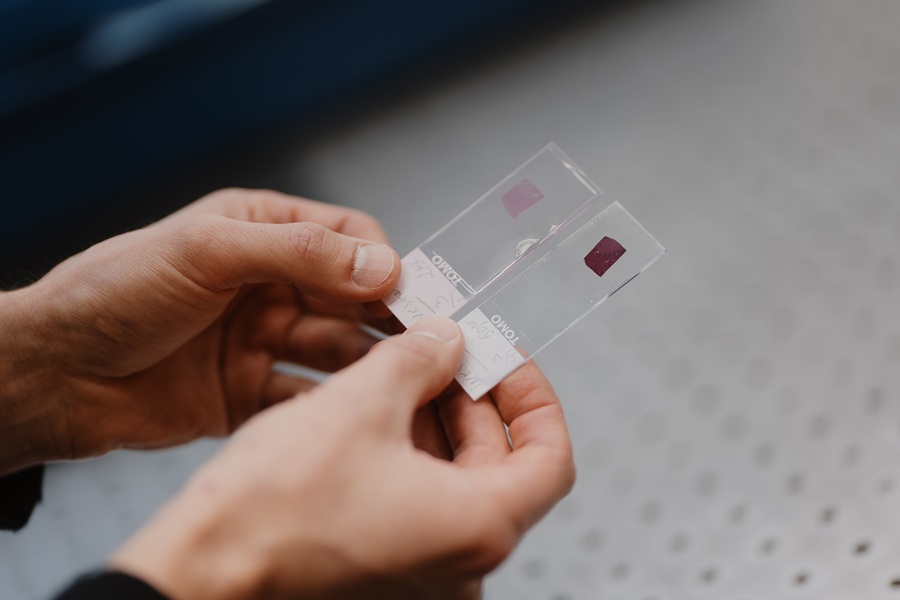
New Laser-Based Method to Accelerate Cancer Diagnosis
Researchers have developed a method to improve cancer diagnostics and other diseases. Collagen, a key structural protein, plays various roles in cell activity. A novel multidisciplinary study published... Read more
New AI Model Predicts Gene Variants’ Effects on Specific Diseases
In recent years, artificial intelligence (AI) has greatly enhanced our ability to identify a vast number of genetic variants in increasingly larger populations. However, up to half of these variants are... Read more
Powerful AI Tool Diagnoses Coeliac Disease from Biopsy Images with Over 97% Accuracy
Coeliac disease is an autoimmune disorder triggered by the consumption of gluten, causing symptoms such as stomach cramps, diarrhea, skin rashes, weight loss, fatigue, and anemia. Due to the wide variation... Read moreTechnology
view channel
Smartphones Could Diagnose Diseases Using Infrared Scans
Rapid advancements in technology may soon make it possible for individuals to bypass invasive medical procedures by simply uploading a screenshot of their lab results from their phone directly to their doctor.... Read more
Novel Sensor Technology to Enable Early Diagnoses of Metabolic and Cardiovascular Disorders
Metabolites are critical compounds that fuel life's essential functions, playing a key role in producing energy, regulating cellular activities, and maintaining the balance of bodily systems.... Read more
3D Printing Breakthrough Enables Large Scale Development of Tiny Microfluidic Devices
Microfluidic devices are diagnostic systems capable of analyzing small volumes of materials with precision and speed. These devices are used in a variety of applications, including cancer cell analysis,... Read moreIndustry
view channel











